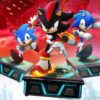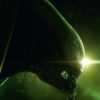As the sun settled on Kona’s breathtaking shoreline and the breeze carried the smell of salt water and tropics up to the third-story conference room, I couldn’t help but think about how sweaty I must have looked. It was the end of two full days of Sonic Frontiers mayhem on the famous Hawaiian “big island”, our mates over at Sega having brought us out for an extensive hands-on preview of the upcoming title. You can read my full thoughts on that here, but the game is shaping up to be one of the more interesting titles of 2022 and as I sat there waiting for my time to interview Sonic producer and legend Takashi Iizuka, all I could think about was how bloody hot it was.
Fortunately for me, and Sonic fans everywhere, Iizuka San was graciously relaxed about both the heat and his team’s latest effort. It’s not hard to see why, Sonic Frontiers has us cautiously optimistic about its transition from linear platforming to open-world exploration, a shift Sonic Team has been preparing for for quite some time. As the light left us and the air conditioner blessedly finally kicked in, Iizuka San and I unpacked the moving parts behind Sonic Frontiers’ combat and open-world systems before diving head-first into the game’s spiritual inspirations and aspirations.

First up, I know it’s been a long couple of days, so thank you for coming out at the end of it to chat. I appreciate it. So, Sonic Frontiers is quite a change for the iconic blue hedgehog. How does it feel to create a game that is such a departure for the franchise?
Takashi Iizuka: Yes, we changed a lot from the previous Sonic titles and to be honest, Iwas a little bit nervous to show this brand-new product to people for the first time. But actually, when we announced the title, we were play testing as well at the same time and really trying to figure out, hearing from the people playing the game outside of our company and outside of the development team, what feedback they had from us on the game – how they felt about the open zone concept and really listening to what they were saying and what they wanted and what they want to change. And spending the time with the development team using the user playtest feedback to change the game to improve the game and to balance it. And because all that work went in, the development team really did a great job listening to all that feedback and improving the game and getting it to be what even other people were excited to play. It really shows at Gamescom and TGS, we saw a lot of people really excited about the game content and it’s because of all the hard work put into improving the game that we were able to get there.
So were there specific things that you wanted to retain from older titles, whether it was mechanics, iconography, or anything like that?
Takashi Iizuka: When we talk about Sonic, the high-speed action and really the speed is something that we need to be very, very respectful of because that kind of is the lifeblood of the character and the experience that people are having. So, all of the game systems that we were putting into play, Cyberspace was one of those game systems that we had in the concept originally and we were going to deliver. And Cyberspace is going to be that high-speed Sonic action that everyone knows and loves. The team was very confident that they’d be able to deliver something that felt like that high-speed action. But when we talk about moving into the open area and what are we going to do in that open area and how is it going to get that Sonic-y high speed gameplay down, that was one of the elements that the team wanted to make sure in the very early stages they were getting right and getting in well.
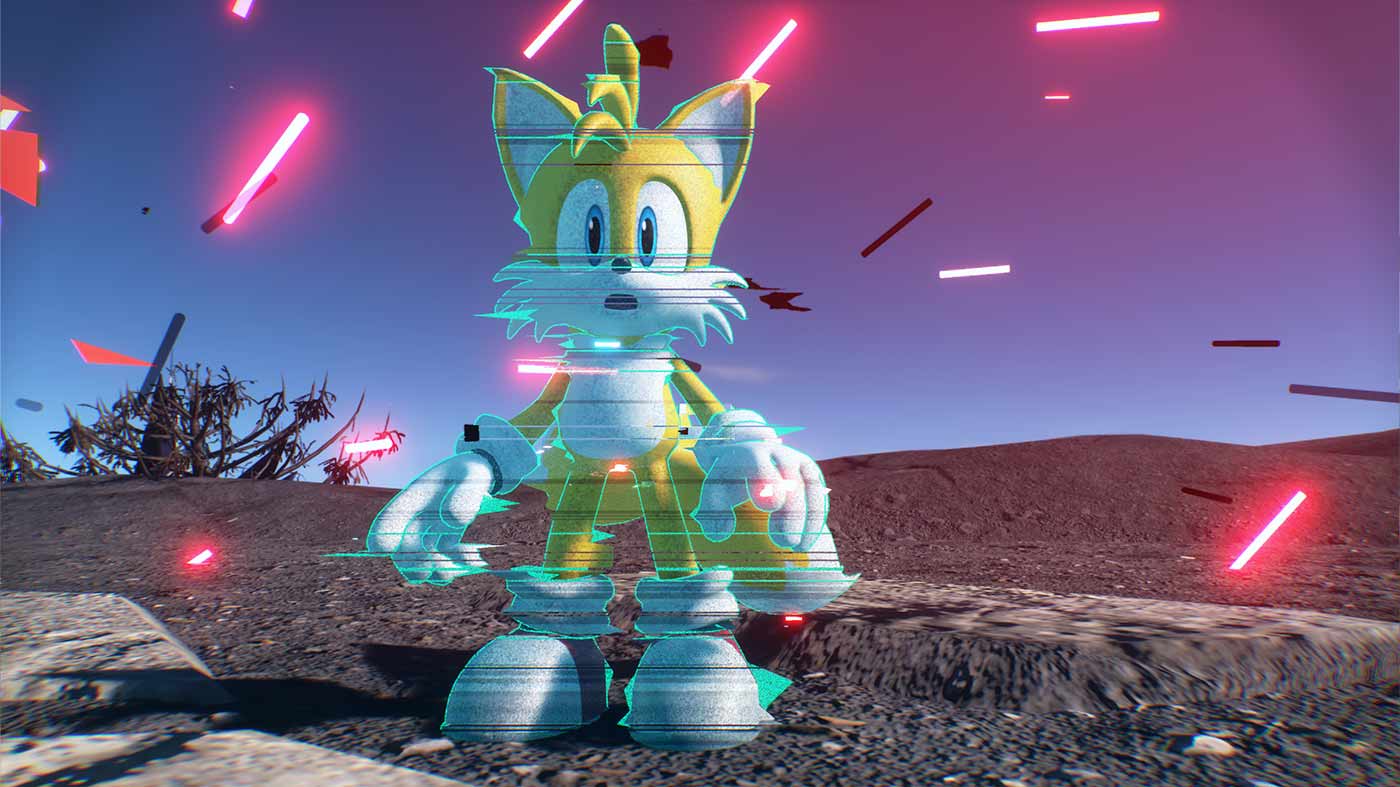
Sounds great, and you sort of answered my next question about how early the Cyberspace portions were included in the game. But I guess I just want to talk on specifically how the Cyberspace parts contrast with the open space and how you feel those two things work together to form Sonic Frontiers?
Takashi Iizuka: When we talk about Cyberspace and the Open Zone area, Kishimoto-san, the director of the title, has also kind of stated this before, that the inspiration behind the Open Zone format was really to create a playable world map that Sonic could run around on. And the whole purpose of that map was to get you into the Cyberspace areas, to get you into the core gameplay, which is that linear, high-speed Sonic action. And that was really the idea that it started with. But when they started making that, they realized they had this big map that you could kind of run around as Sonic and you get into the Cyberspace areas, and it felt very good as Sonic in the Cyberspace areas, but when you go back into the open area map, it didn’t feel like there was anything really to do except just kind of walk around. And as they were developing the game, they realized, we need to add a little bit more to this map to really make it something playable and fun, because there’s nothing really to do here. And so they started adding all these new elements, new gimmicks, they added boss battles and all these other things to do on the map.
So most of the gameplay used to be like Cyberspace, but next thing you know, the map is becoming this whole new, huge piece of gameplay in addition to the Cyberspace content that they were planning on.

Speaking of those boss battles, there are quite a few impressive and very scary enemy designs littered throughout the game. Can you talk a bit about how you and the team were inspired to create these things? I noticed a little bit of Evangelion in there, maybe?
Takashi Iizuka, laughing: In usual Sonic games, we have Eggman as the villain, and all of the kind of enemies are Eggman created robots, which are usually kind of animal themed designs as robotic enemies. But in this game, the enemies are not created by Eggman. These are completely strange new enemies not made by Eggman. What are they doing here on this island? Who created them? Why are they attacking Sonic? Like, what is even going on? These are all the mysterious elements that we wanted people to feel when they saw these original enemies on the very first map. This is not a usual Sonic and these are not usual Sonic enemies. Sonic, as well, doesn’t know what these enemies are, what they’re doing here, who made them. And that was part of the whole design concept of the world and of the environment. And the story that they wanted to tell is to really get into more of that mysterious look and feel, to have people really think about what these enemies are and maybe why they’re designed like that. The enemy design especially doesn’t look like a typical Sonic enemy design. And that’s intentionally done because they wanted to bring that mystery in and not have it feel like just a usual Sonic enemy.
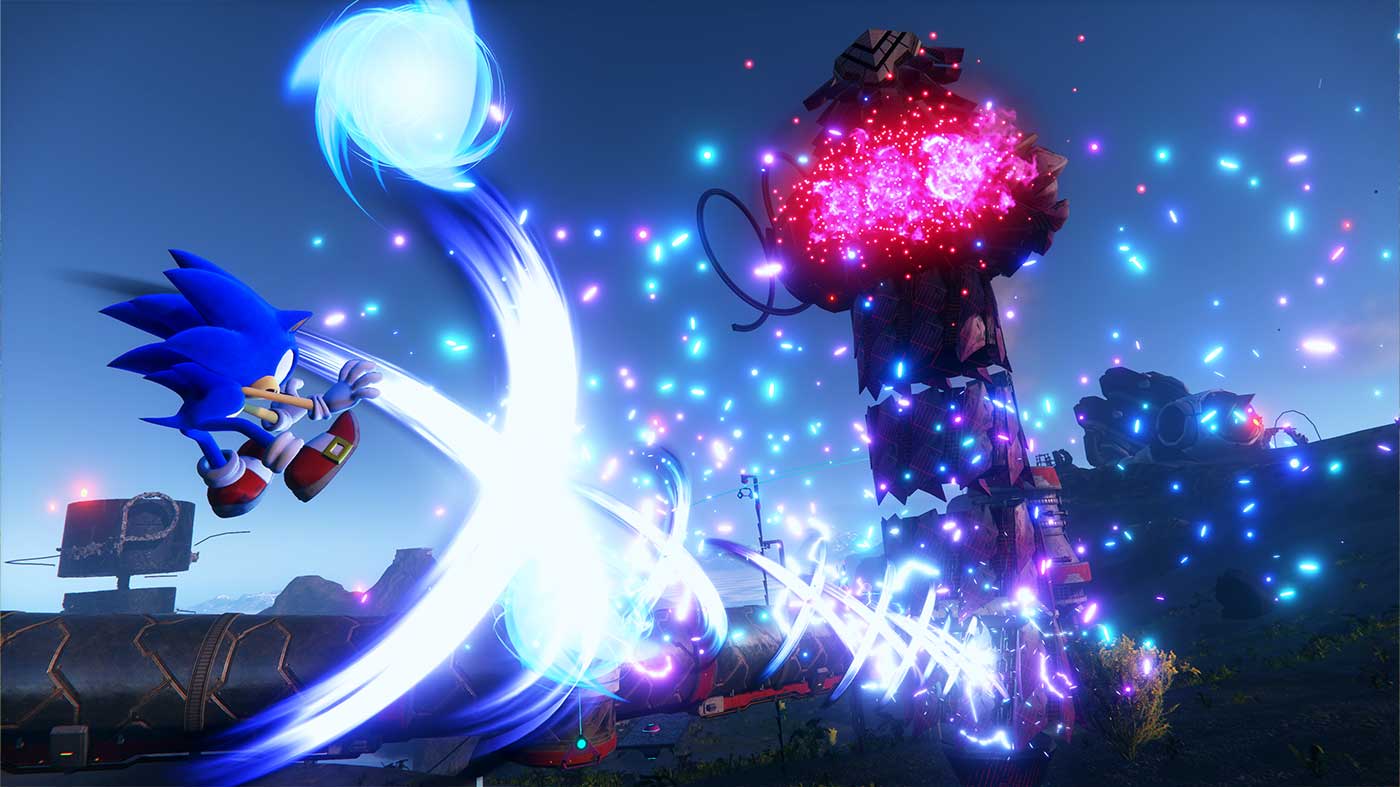
So, combat seems very easy to pick up, but tricky to fully master. How did the team go about balancing Sonic skills for new and old players in this new world?
Takashi Iizuka: So yes, the boss battles in the game are kind of as important as the Cyberspace levels. And making sure the battles felt good was important because Sonic games never really had battle systems, enemies that you would stop and fight because you’re always running to the end goal. But with the open zone format of the game, we’re now allowing people this open space to run around and do what they want. If there’s an enemy that’s on the map, they can choose to not engage it, or they can choose to engage it, or they can choose to engage it and say, “I actually don’t like this and I want to run away”. So, making sure the boss battles felt good, making sure the boss battles felt like something you wanted to do because you had the choice to do it or to just not even do it at all, was very key to them being a unique and fun element of gameplay. So, yes, we have the high-speed action as the core Sonic gameplay. Yes, a lot of our core fans have a lot of game skills and game time put in, but we don’t really have boss battles in there, so we think even our core gamers, our core Sonic fans, may not be all that skilled at boss battles.
THE CHEAPEST COPY: $74.90 FROM AMAZON WITH FREE SHIPPING
So we wanted to make sure boss battles are fun, but if everyone can’t do it and they’re not going to be very easily maybe picked up, we wanted to have a bunch of actions and abilities and things that Sonic could do that you could unlock and say, hey, I’m not really good at battle, but if I have these abilities, I think I can defeat these people. That was kind of the idea that brought forth the skill tree to say, if you want to do the high-speed action abilities, yes, you can do that. If you want to do battle, here are the different features or the different actions that Sonic can be upgraded to, to make battle easier. To make sure, even if you’re not, you know, if you’re a new player or you’re a core player who maybe isn’t all that good at battle, you can still have a lot of fun. And we’re giving you the ability to make Sonic strong enough to defeat enemies at the skill level that you’re comfortable with.
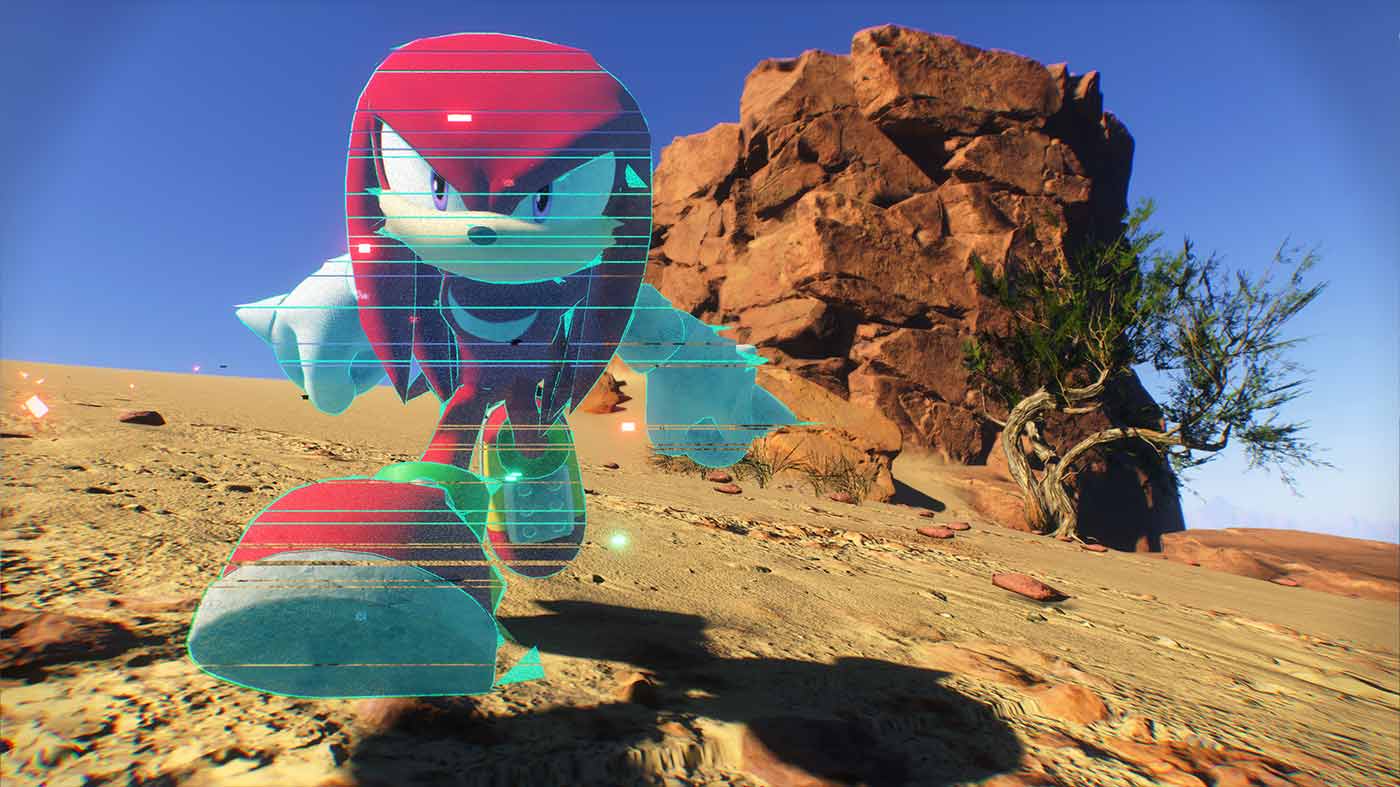
Yeah, fantastic. So I guess pivoting a little bit. Can you talk a little bit about the inspiration behind the different islands and why are they named after Greek gods?
Takashi Iizuka, feigning the look of a kid caught with his hand in the proverbial cookie jar: All the namings have a lot of meaning in the world, and a lot of the meaning is going to be kind of tied into the story and the things that are happening in the story. So, the Chaos Island specifically is something that will touch on that…so the Titans that exist on the islands, and again, in English, they’re being called Titans. But if you play the game in Japanese, they’re going to be called Kyojin or Kyoshin and the Kyo is going to be like gigantic or monstrous, very large. And the Jin or the Shin part is going to be God. And this isn’t like a Christian Islamic God. It’s probably going to be more of like, the Eastern gods that exist within this world. It’s going to probably have that more of a feeling to it. Each one of the Starfall Islands has one of these enormous gods that kind of presides over the island. So, you can think of the entire Starfall Islands as islands where these enormous deities do exist.
Wait, so is that an exclusive story point reveal?
Takashi Iizuka and the translator both laugh.
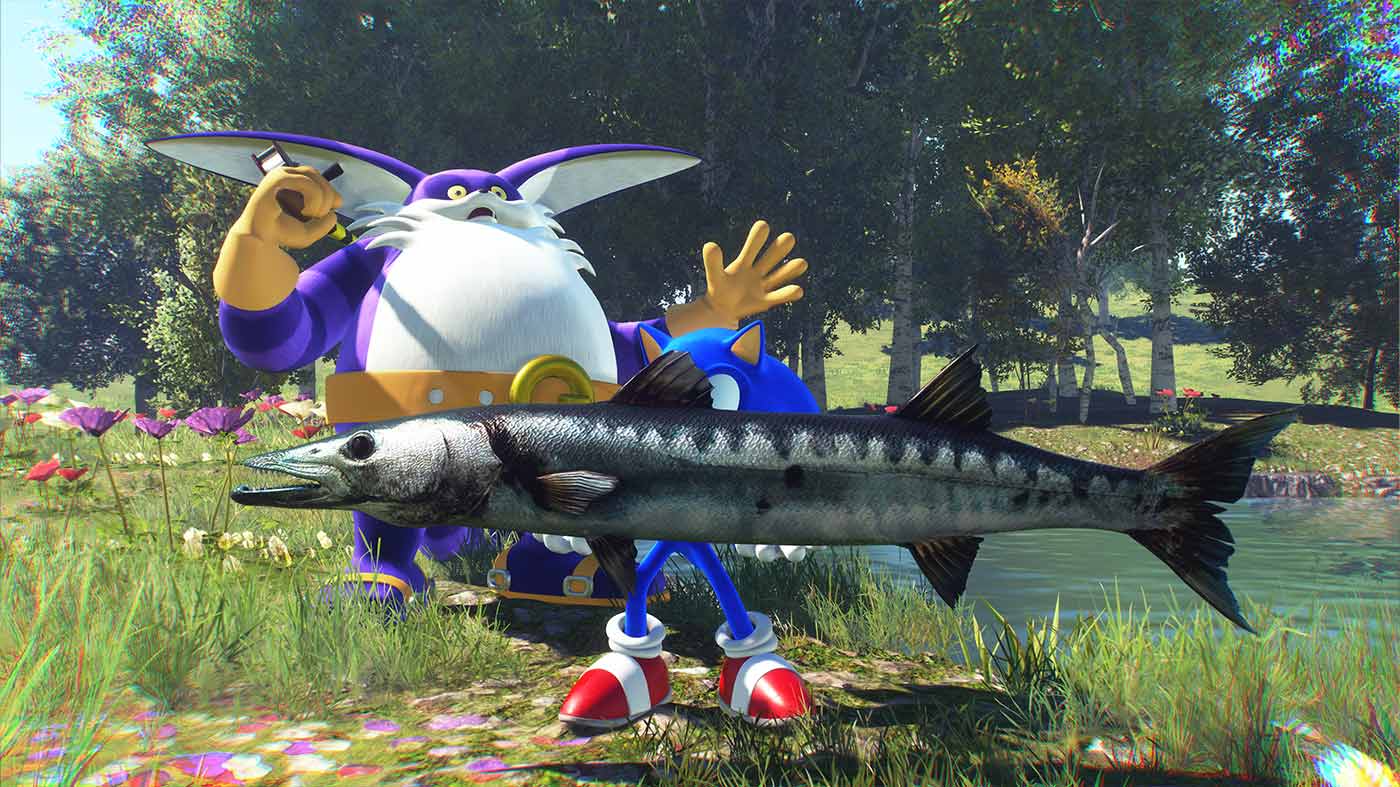
The opening hour of the game is very subdued and almost sad sometimes. I found this contrasted with the more frantic energy of Cyberspace and I was wondering how you feel about those two tones and what you want the player to feel when they’re playing through those early hours?
Takashi Iizuka: The theme and the tone is really a serious and a mysterious tone, especially on that first island. You’re getting to the island, it’s kind of like, what is this place? Why am I here? I don’t understand what’s going on. These are kind of the emotions and thoughts that Sonic is having as well in the very beginning. So, they did want to make sure people were interested in what was going on and not told what was going on, but having them want to explore and want to figure out and want to find more about the story of the Starfall Islands and the story of what the characters are doing there. But Sonic is still a fun and happy game, so we’re not going to be like, overly serious. This isn’t like we’re going to really hit you over the head with the sad, sad, sad storytelling. We do have a lot of stuff that we want to put in there because it’s fun. We have the Kocos, the creatures that live on the islands. We have Big the Cat! Like, what’s he doing in Cyberspace? And we’re fishing?!
We want to include these things that are not so serious in because it’s still a Sonic game and we still want people to laugh and have fun and not just be like a sad, depressing story. It is supposed to be serious, but we’re still light-hearted.
Lastly, I wouldn’t be much of a games journalist if I didn’t ask this while I had the chance. Is there a chance we’re going to see Shadow in the game?
Takashi Iizuka: Ah, No (laughs). Shadow is one of my favourite characters, and I definitely want to see Shadow in more content. So, I’m going to try to include more Shadow in content moving forward.
Sonic Frontiers releases on November 8, 2022 for PS5, PS4, Xbox Series X|S, Xbox One, Switch and PC.
Amazon currently has the cheapest price at $74.90 with free shipping.
The author of this article attended a Sonic Frontiers preview event in Hawaii. Flights and accommodation were provided by SEGA.
